|
Books Should Be Free Loyal Books Free Public Domain Audiobooks & eBook Downloads |
|
|
Books Should Be Free Loyal Books Free Public Domain Audiobooks & eBook Downloads |
|
Adventure Books |
|---|
|
Book type:
Sort by:
View by:
|
By: William Worthington Fowler (1833-1881) | |
|---|---|
 Woman on the American Frontier
Woman on the American Frontier
Many books describe the role of men during American history. However, at the same time, women did much: comforted, fought, helped, raised children, and much more. This book is full of mini-biographies of women in many places, and many ages- each chapter telling about a different subject. | |
By: William MacLeod Raine (1871-1954) | |
|---|---|
 Tangled Trails
Tangled Trails
The aptly titled "Tangled Trails, A Western Detective Story" takes the listener through a web of curious incidents revolving around the murder of a prominent man in Denver. Kirby Lane was quite obviously the guilty party in the murder of his uncle. Lane, among others, had had a falling out with his uncle, the victim James Cunningham. But there were some who believed his nephew to be innocent of the hideous crime. Lane feared the guilty party to be a female bronco rider whom he had befriended, as her presence at the scene of the crime was quite evident, albeit only to him... | |
By: Mary Macleod (?/?) | |
|---|---|
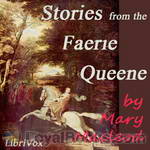 Stories from the Faerie Queene
Stories from the Faerie Queene
"The object of this volume is to excite interest in one of the greatest poems of English literature, which for all its greatness is but little read and known--to excite this interest not only in young persons who are not yet able to read "The Faerie Queene," with its archaisms of language, its distant ways and habits of life and thought, its exquisite melodies that only a cultivated ear can catch and appreciate, but also in adults." (From the Author's introduction) | |
By: Rolf Boldrewood (1826-1915) | |
|---|---|
 Robbery Under Arms
Robbery Under Arms
A tale of cattle duffing, horse stealing and bushranging in the New South Wales outback with Captain Starlight.To quote the author "though presented in the guise of fiction, this chronicle of the Marston family must not be set down by the reader as wholly fanciful or exaggerated. Much of the narrative is literally true, as can be verified by official records. A lifelong residence in Australia may be accepted as a guarantee for fidelity as to local colour and descriptive detail." | |
By: F. Tennyson Jesse (1888-1958) | |
|---|---|
 The Milky Way
The Milky Way
The Milky Way - F. Tennyson Jesse's first novel - began life as a 1913 magazine serial called The Adventures of Viv. In it, poor-but-plucky Cornish painter/model Vivian Lovel recounts events of her twenty-first year: en route from Penzance to London by steamer, she catches a baby dropped over the side of a sinking ship - and decides to keep it. Penniless, however, she "platonically" pairs up with pan-like fellow passenger Peter Whymperis, an actor and aspiring writer, and together they find work with a fifth-rate repertory troupe... | |
By: Sapper (Herman Cyril McNeile) (1888-1937) | |
|---|---|
 Bulldog Drummond
Bulldog Drummond
‘Sapper’, the pseudonym of Colonel. H.C. McNeile M.C. was one of the most popular English writers of thrillers between the two world wars. And Hugh (Bulldog) Drummond was his most popular leading character. This book, the first of the series, is of its time. Opinions are expressed which would not pass muster today and the books are strongly laced with jingoism, racial stereotypes and hostile references to foreigners. Naturally all the villains are masters of disguise and invariably put off murdering the hero until later whist they think of something absolutely beastly. Nevertheless the story is a good one and well told. | |
By: Neil Boyton, S.J. (1884-1956) | |
|---|---|
 Killgloom Park
Killgloom Park
Join Angelo Daily and his chums during a fun filled summer at Killgloom Park, a Coney Island, New York amusement park in the 1930's. A runaway tiger! Tracking down a wanted thief! Climbing down a ferris wheel in the middle of the night! These are just a few of the exciting things that happen during this adventurous summer!The author grew up in the world of amusement parks, providing first hand material for two of his boys books – “On the Sands of Coney” and its sequel, this title - “Killgloom Park”... | |
By: Rex Beach (1877-1949) | |
|---|---|
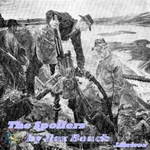 The Spoilers
The Spoilers
MANUAL OF SURGERY, OXFORD MEDICAL PUBLICATIONSBY ALEXIS THOMSON, F.R.C.S.Ed.PREFACE TO SIXTH EDITION Much has happened since this Manual was last revised, and many surgical lessons have been learned in the hard school of war. Some may yet have to be unlearned, and others have but little bearing on the problems presented to the civilian surgeon. Save in its broadest principles, the surgery of warfare is a thing apart from the general surgery of civil life, and the exhaustive literature now available on every aspect of it makes it unnecessary that it should receive detailed consideration in a manual for students... | |
By: Louis Joseph Vance (1879-1933) | |
|---|---|
 The False Faces
The False Faces
This is the second book in the Lone Wolf series. Michael Lanyard had turned his back on his career as gentleman-thief and started a respectable life, when World War I wrecks his life. With his family dead and the spy Ekstrom alive after all, his special skills as the Lone Wolf are needed once more, this time in the war behind enemy lines. But again, there is a mysterious woman involved... | |
 Red Masquerade
Red Masquerade
In the beginning of his career, Michael Lanyard alias The Lone Wolf, the most talented thief of his day, made the acquaintance of the beautiful Princess Sofia, but he also made an enemy of her husband, Prince Victor. Years later, Lanyard's daughter gets into the crossfiere... Red Masquerade is the third book in the Lone Wolf Series. | |
By: Harriet T. Comstock (1860-1925) | |
|---|---|
 Janet of the Dunes
Janet of the Dunes
Known primarily for her children's books, Harriet T. Comstock would occasionally depart from that genre and showcase her writing talent in adult prose as well. Janet of the Dunes is one such departure wherein she masterfully takes us into the lives of the bold men and women who tended those life saving stations along the seaboard which many a ship relied upon for their safety. They were simple people, large of heart and as close-knit as a tiny community can and must ever be, and they, above all else, took their duties very seriously... | |
By: Sister M. Imelda Wallace, S.L. (1884-?) | |
|---|---|
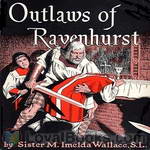 Outlaws of Ravenhurst
Outlaws of Ravenhurst
This exciting historical adventure depicts the last stand of the Gordons - God's "outlaws" - fighting for their Catholic Faith in the early days of the Protestant Revolution in seventeenth-century Scotland. | |
By: Howard R. Garis (1873-1962) | |
|---|---|
 Uncle Wiggily's Adventures
Uncle Wiggily's Adventures
Due to Uncle Wiggily's rheumatism being so very bad, Dr. Possum prescribes a journey to help him move around, have a change of air, and a good long bout of traveling to get more exercise. So Uncle Wiggily packs his valise and sets forth! | |
By: Arthur M. Winfield (1862-1930) | |
|---|---|
 The Rover Boys at School
The Rover Boys at School
First of the famous Rover Boys books by future Hardy Boys creator Edward Stratemeyer (under the pseudonym Arthur M Winfield), this is an introduction to the fun-loving teenage Rover Brothers -- Dick, Tom & Sam. Virtual orphans, they are sent by their prudish Uncle Randolph to a military boarding school and their adventures soon begin! | |
By: Gen. George A. Custer (1839-1876) | |
|---|---|
 My Life on the Plains
My Life on the Plains
George Armstrong Custer (December 5, 1839 – June 25, 1876), one of the most mythologized figures in American history, was an United States Army officer and cavalry commander in the American Civil War and the Indian Wars. He eventually met his fate in the battle of Little Big Horn in one of the most notable defeats of American armed forces.My Life on the Plains is an autobiographical first-hand account of the Indian Wars of 1867-1869, detailing the winter campaign of 1868 in which Custer led the 7th US cavalry against the Cheyenne Indians... | |
By: Miriam Michelson (1870-1942) | |
|---|---|
 In the Bishop's Carriage
In the Bishop's Carriage
Nancy 'Nance' Olden, a young and very pretty woman, is an accomplished liar and thief. Raised in a horrific orphanage, called the Cruelty by its occupants, Nance and her criminal boyfriend, Tom Dorgan, are pulling a con when the book begins. The results of their act propel Nance into a series of events that she could never have imagined. This was Miriam Michelson's first novel and it was considered a 'blockbuster' in its day. Ranked fourth on the list of bestsellers of 1904 by "Publishers Weekly," Michelson's book was a source of controversy due to the dubious ethics and morals of its heroine. | |
By: Byron A. Dunn (1842-1926) | |
|---|---|
 Raiding with Morgan
Raiding with Morgan
It is a fictional tale of cavalry actions during the U.S. Civil War, under General John Morgan. | |
By: Caroline Lockhart (1871-1962) | |
|---|---|
 Dude Wrangler
Dude Wrangler
Spoiled, handsome, 24 year old Easterner meets pretty, no-nonsense gal from Wyoming, is instantly smitten and does a sea-change to try and impress her in this genial romantic comedy. | |
By: James Brendan Connolly (1868-1957) | |
|---|---|
 The Trawler
The Trawler
The Trawler is a short story revolving around the trying life of a group of bank fishermen based in Gloucester. Skipper Hugh Glynn worked his men hard; some said too hard, and Arthur Snow was one who had paid the ultimate price.Arthur's close friend Simon Kippen decided he'd ask to take the place of his fallen friend aboard Hugh Glynn's vessel as a dory mate, and from there we have a tale of the open seas between Gloucester and Newfoundland where perhaps only the names and locations have changed from the countless stories of similar nature; the key being that this one, however, is first hand. | |
By: Adalbert Stifter (1805-1868) | |
|---|---|
 Rock Crystal
Rock Crystal
On Christmas Eve, two children, a brother and sister, leave their grandmother's house in an Alpine village and get lost in the mountain snow. They become trapped among the rock crystals of the frozen glacier. This short and gripping novel, by 19th century Austrian master Adalbert Stifter, influenced Thomas Mann and others with its suspenseful, simple, myth-like story and majestic depictions of nature. Poet W.H. Auden called the work "a quiet and beautiful parable about the relation of people to places, of man to nature."(Introduction by Greg W.) | |
By: Edward Whymper (1840-1911) | |
|---|---|
 Scrambles Amongst the Alps in the Years 1860-69
Scrambles Amongst the Alps in the Years 1860-69
Scrambles Amongst the Alps is one the great classics (some would say the greatest) of early mountaineering literature, and Edward Whymper (1840-1911) one of the leading figures of the early years of Alpine climbing. He is best known, of course, for his many attempts on the Matterhorn, and for the loss of four members of his climbing party after the successful first ascent of the peak in July, 1865. Although the Matterhorn stands in ways in the center of his book, there are descriptions of many other ascents as well, in the Alps of France and Italy, as well as those of Switzerland... | |
By: Percy James Brebner (1864-1922) | |
|---|---|
 Christopher Quarles College Professor and Master Detective
Christopher Quarles College Professor and Master Detective
Christopher Quarles is a professor of philosophy and a private consulting detective. Quarles, along with his granddaughter Zena, assists Police Detective Murray Wigan in solving various crimes and mysteries in Victorian England. Whereas the police look for facts and then form a theory of a case, Quarles first forms a theory, often seemingly absurd and based on little more than intuition, then seeks facts in support of it. Of course, to the astonishment of all concerned, Quarles' theories usually... | |
By: Rex Beach (1877-1949) | |
|---|---|
 Silver Horde
Silver Horde
The Silver Horde , is set in Kalvik, a fictionalized community in Bristol Bay, Alaska, and tells the story of a down on his luck gold miner who discovers a greater wealth in Alaska's run of salmon (silver horde) and decides to open a cannery. To accomplish this he must overcome the relentless opposition of the "salmon trust," a fictionalized Alaska Packers' Association, which undercuts his financing, sabotages his equipment, incites a longshoremen's riot and bribes his fishermen to quit. The story line includes a love interest as the protagonist is forced to choose between his fiance, a spoiled banker's daughter, and an earnest roadhouse operator, a woman of "questionable virtue." | |
 Flowing Gold
Flowing Gold
Unfairly given a dishonorable discharge from the army, Calvin Gray goes to Dallas, where he manages to win the trust of a jeweler and is able to sell a number of diamonds to the newly oil rich Briskows. He makes friends with the family and helps them adjust to their newly found riches. The Briskows, in turn, help him prove false the charges that caused his dismissal from the army. | |
By: Arthur Morrison (1863-1945) | |
|---|---|
 A Child of the Jago
A Child of the Jago
Arthur George Morrison (1 November 1863, Poplar, London - 4 December 1945, Chalfont St Peter, Buckinghamshire) was an English author and journalist known for his realistic novels about London's East End and for his detective stories. Morrison's most famous novel is A Child of the Jago, published in 1896, The novel described in graphic detail living conditions in the East End, including the permeation of violence into everyday life (it was a barely fictionalized account of life in the Old Nichol Street Rookery). (Introduction by Wikipedia and Algy Pug) | |
By: Harold L. Goodwin (1914-1990) | |
|---|---|
 Rip Foster Rides the Gray Planet
Rip Foster Rides the Gray Planet
"Foster, Lieutenant, R. I. P.," blared the voice horn, and five minutes later Rip Foster was off into space on an assignment more exciting than any he had ever imagined. He could hardly believe his ears. Could a green young Planeteer, just through his training, possibly carry out orders like these? Sunny space, what a trick it would be! From the moment Rip boards the space ship Scorpius there is a thrill a minute. He and his nine daring Planeteers must cope with the merciless hazing of the spacemen commanding the ship, and they must outwit the desperate Connies, who threaten to plunge all of space into war... | |
 Smugglers' Reef
Smugglers' Reef
Seventh entry in the Rick Brant Science Mystery Adventure series has Rick and buddy Scott using infrared technology on the trail of smuggling no-goodniks in the vicinity of Spindrift Island, Rick's home and location of his dad's laboratory, off the New Jersey & New York coast. | |
 Caves of Fear
Caves of Fear
Entry in the Rick Brant series by Goodwin under the name John Blaine, which began in 1947. 'Rick and Scotty travel to the Himalayas again, this time to stop nuclear materials from falling into the wrong hands.' says Wikipedia. | |
By: Joseph Plumb Martin (1760-1850) | |
|---|---|
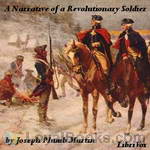 A Narrative of a Revolutionary Soldier
A Narrative of a Revolutionary Soldier
Joining the Continental Army as a teenager, Joseph Plumb Martin spent the next eight years fighting in the Revolutionary War as an enlisted man. His memoirs tell in detail his experiences during that time...the bitter cold, hunger, loss of life, long marches, and fear of battle. He also includes tales of fishing, hunting, and other activities...including encounters with a "saucy miss". His narrative reveals much about American life at the time and is one of the fullest and best accounts of the Revolutionary War, presented from a private's point of view.The book has been later republished under the names Private Yankee Doodle and Memoir of a Revolutionary Soldier. | |
By: Alice B. Emerson | |
|---|---|
 Ruth Fielding at Briarwood Hall
Ruth Fielding at Briarwood Hall
In this, the second book of the Ruth Fielding series, Ruth goes to boarding school with her best friend Helen. When they get there, Ruth starts her own sorority called the SweetBriars for the new girls. Her sweet group of girls conflicts with the two other sororities the Upedes and the Fussy Curls. In the midst of settling in to the new place, there is a campus rumor about a legend of the marble harp playing ominously at night. But when the French teacher is in a fright, will Ruth be able to solve this mystery?The Ruth Fielding series has influenced several other major series that came later, including Nancy Drew, the Dana Girls, and Beverly Gray. | |
By: Frances Trego Montgomery (1858-1925) | |
|---|---|
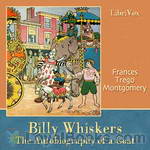 Billy Whiskers, the Autobiography of a Goat
Billy Whiskers, the Autobiography of a Goat
This delightful children's story can be enjoyed by kids and adults alike! A mischievous goat, Billy Whiskers, gets into trouble so often that the book could be named, "Billy Trouble Whiskers"! This humorous story will bring you many chuckles and give you a chance to get lost in Billy's adventures with childlike enthusiasm. From riding in a police car, to being a firehouse mascot, getting married, and finding himself a circus goat, Billy's adventures will certainly keep you entertained! (Introduction by Allyson Hester) | |
By: Mildred A. Wirt Benson (1905-2002) | |
|---|---|
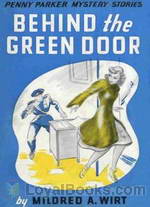 Behind the Green Door
Behind the Green Door
Penny Parker is a teen-aged sleuth and amateur reporter with an uncanny knack for uncovering and solving unusual, sometimes bizarre mysteries. The only daughter of widower Anthony Parker, publisher of the "Riverview Star," Penny has been raised to be self-sufficient, outspoken, innovative, and extraordinarily tenacious. Her cheerful, chatty manner belies a shrewd and keenly observant mind. Penny was the creation of Mildred A. Wirt, who was also the author of the original Nancy Drew series (under the pseudonym Carolyn Keene)... | |
 Clue of the Silken Ladder
Clue of the Silken Ladder
In THE CLUE OF THE SILKEN LADDER, Penny investigates multiple mysteries. What is the purpose of the singular silken ladder made by the secretive and somewhat sinister old Japanese curio shop owner? How can the "Riverview Star" obtain evidence that a popular troup of spiritualists really are heartless con artists? Last, who is perpetrating the gravity-defying burglaries that have rocked the town ? Meanwhile, the Parker housekeeper, Mrs. Weems, has come into an inheritance and plans to leave Riverview, much to the Parkers' dismay... | |
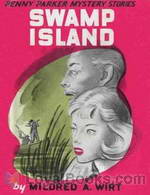 Swamp Island
Swamp Island
Late entry in the Penny Parker teen girl mystery series (1939-47) by one of the early ghostwriters (as Carolyn Keene) of Nancy Drew concerns an escaped embezzler, his revenge on the reporter whose articles helped convict him, and a long missing $50 grand. | |
By: Charles Norris Williamson | |
|---|---|
 The Golden Silence
The Golden Silence
Trying to get away from an engagement he had got himself into more or less against his will, Stephen Knight travels to Algiers to visit his old friend Nevill. On the Journey there he meets the charming and beautiful Victoria. She is on her way to Algiers to search for her sister, who had disappeared years ago after marrying an Arab nobleman. With the support of his friend, Stephen Knight decides to help the girl - but when she also disappears, the adventure begins... | |
By: Arthur Griffiths (1838-1908) | |
|---|---|
 Passenger from Calais
Passenger from Calais
An army officer, and a mysterious lady with a maid and baby in tow, are the only passengers on the Engadine express from Calais. The lady is afraid that someone is following her. Who is she? And what is her strange package? One suspicious conversation and two private detectives later Colonel Basil Annesley is determined to find out! | |
By: Lord George Gordon Byron (1788-1824) | |
|---|---|
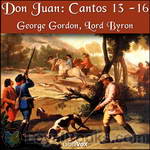 Don Juan, Cantos 13 -16
Don Juan, Cantos 13 -16
These are the last four Cantos of his mock epic that Byron completed in the year before his death at the age of 36 in Messolonghi, Greece, where he had gone to fight for the nationalists against the Ottoman Empire. Juan, now in England, is invited to spend the autumn with a hunting party at the ancient country seat of Lord Henry and Lady Adeline Amundeville. There, he meets the most intriguing of the Byronic heroines, Aurora Raby, and is visited by a ghost with ample breasts (!). That is the narrative outline but hardly the focus of the last Cantos... | |
By: A. E. W. Mason (1865-1948) | |
|---|---|
 The Four Feathers
The Four Feathers
The Four Feathers is a 1902 adventure novel by British writer A.E.W. Mason that has inspired many films of the same title.The novel tells the story of British officer, Harry Feversham, who resigns his commission in the East Surrey Regiment just prior to Sir Garnet Wolseley's 1882 expedition to Egypt to suppress the rising of Urabi Pasha. He is faced with censure from three of his comrades for cowardice, signified by the delivery of three white feathers to him, from Captain Trench and Lieutenants Castleton and Willoughby, and the loss of the support of his Irish fiancée, Ethne Eustace, who presents him with the fourth feather... | |
By: Henry Oyen (1882-1921) | |
|---|---|
 The Snow-Burner
The Snow-Burner
The Snow-Burner is what the Native Americans called Reivers, and it was a rough and tumble life in the land where Reivers chose to live up to his name. The name was attributed to Reivers upon his proof after arriving in the north country because of his ability to defeat all perceived enemies in whatever means was necessary; whether by brute force and tough action, or by sheer cunning which he had gained living in the city in his earlier days. When assigned to oversee a group of foreigners in a work camp, he treated them with utter cruelty... | |
By: John Howell (1788-1863) | |
|---|---|
 The Life and Adventures of Alexander Selkirk
The Life and Adventures of Alexander Selkirk
This work was the true story of Alexander Selkirk (1676 to December 13, 1721), a Scottish sailor who was employed in a number of different trades during his early life. As a young man, Selkirk learned the skills of tanning and shoemaking, and later became a buccaneer (a government-sanctioned pirate) on the Cinque Ports, working his way up to the position of ship's sailing master or navigator. But in the case of Selkirk, his experiences would eventually help him to survive his isolation on a deserted island in the Juan Fernández archipelago, off the coast of Chile, where he spent 52 months before being rescued... | |
By: John C. Hutcheson (1840-1897) | |
|---|---|
 The Ghost Ship
The Ghost Ship
This book intentionally veers in and out of the supernatural, as the title implies. The officers get more and more bewildered as they work out their position, and yet again encounter the same vessel going in an impossible direction. Having warned you of this, I must say that it is a well-written book about life aboard an ocean-going steamer at about the end of the nineteenth century. | |
By: E.D.E.N. Southworth (1819-1899) | |
|---|---|
 The Missing Bride
The Missing Bride
Prepare yourself for a journey, full of adventures and plot twists which will keep you guessing until the very end. This is psychological romance at its best. In the war of 1814, an American heiress falls in love with a British officer. This ill-fated marriage brings together a large group of interesting people who would never have met in other circumstances. | |
By: H. C. Bailey (1878-1961) | |
|---|---|
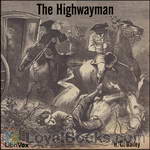 The Highwayman
The Highwayman
A romance and adventure novel, set in England during the reign of Queen Anne. The book is much unlike the author's later detective short stories. The actual book is difficult to locate and appears to have been forgotten. It is not even listed by Wiki as part of the author's work, nevermind have any information on the book itself. | |
By: Friedrich de la Motte Fouqué (1777-1843) | |
|---|---|
 Sintram and His Companions
Sintram and His Companions
Friedrich de la Motte Fouque, also the author of Undine, was a German Romantic writer whose stories were filled with knights, damsels in distress, evil enchantments, and the struggle of good against overpowering evil. 'My strength is as the strength of ten, Because my heart is pure.' Fouque blends the Romantic love for nature and ancient chivalry while telling a powerful story about a young man who yearns for that which he can never attain. | |
By: Guy Boothby (1867-1905) | |
|---|---|
 Cabinet Secret
Cabinet Secret
Witty spy adventure set during the Boer Wars of the late 19th Century. | |
By: Gertrude Atherton (1857-1948) | |
|---|---|
 Rezanov
Rezanov
This novel by the prolific Californian author Gertrude Horn Atherton is based on the real life story of Nikolai Rezanov, a man who, in 1806, pushed for the Russian colonization of Alaska and California. "Not twenty pages have you turned before you know this Rezanov, privy councilor, grand chamberlain, plenipotentiary of the Russo-American company, imperial inspector of the extreme eastern and northwestern dominions of his imperial majesty Alexander the First, emperor of Russia—all this and more, a man... | |
 Valiant Runaways
Valiant Runaways
Savage bears, a river rescue, capture by Indians, escape on wild mustangs and a revolutionary battle await the protagonists of this suspenseful adventure novel, set in California. | |
By: Roy Rockwood | |
|---|---|
 Dave Dashaway and His Hydroplane
Dave Dashaway and His Hydroplane
Never was there a more clever young aviator than Dave Dashaway. All up-to-date lads will surely wish to read about him. This second volume of the series shows how Dave continued his career as a birdman and had many adventures over the Great Lakes, and how he foiled the plans of some Canadian smugglers. (From the 1913 edition) | |
By: Apollonius Rhodius (3rd Cent. -3rd Cent.) | |
|---|---|
 Argonautica
Argonautica
The story of how Jason and a group of famous heroes of Greece took to sea in the Argos has been told many times, before and after Apollonius of Rhodes, wrote his Argonautica, in the 3rd century b.C.. It is not only the oldest full version of the tale to arrive to our days, but also the only extant example of Hellenistic epic. This was already a popular myth by the times of Apollonius, who makes the story of how Jason and the Argonauts sail to Colchis in search of the Golden Fleece, and have to go through a lot of adventures to fulfill their task, a mix of simple narrative and scholarly catalog. The Argonautica had a deep impact on European literature as a whole. | |
By: Robert Louis Stevenson and Lloyd Osbourne (1850-1894) | |
|---|---|
 The Ebb-Tide
The Ebb-Tide
Three men down on their luck in Tahiti agree to ship out on a vessel whose officers have died of smallpox. Their desperate venture inspires them to a further idea: they will steal the schooner and its cargo of champagne, sell them, and live a plentiful life. The thought is intoxicating... and so is the cargo, which they sample. Inattention nearly brings them to grief in a sudden storm. This sobering experience is followed by another - apparently the dead officers had a similar ambition! - and their dreams of riches vanish... | |
By: Robert Louis Stevenson (1850-1894) | |
|---|---|
 Wrecker
Wrecker
The Wrecker (1892) is a novel written by Robert Louis Stevenson in collaboration with his stepson Lloyd Osbourne. The story is a 'sprawling, episodic adventure story, a comedy of brash manners and something of a detective mystery'. It revolves around the abandoned wreck of the Flying Scud at Midway Island. Clues in a stamp collection are used to track down the missing crew and solve the mystery. It is only in the last chapter that different story elements become linked. | |
By: Hiram Bingham (1875-1956) | |
|---|---|
 Inca Lands
Inca Lands
Prof. Hiram Bingham of Yale Makes the Greatest Archaeological Discovery of the Age by Locating and Excavating Ruins of Machu Picchu on a Peak in the Andes of Peru.There is nothing new under the sun, they say. That is only relatively true. Just now, when we thought there was practically no portion of the earth's surface still unknown, when the discovery of a single lake or mountain, or the charting of a remote strip of coast line was enough to give a man fame as an explorer, one member of the daredevil explorers' craft has "struck it rich... | |
By: Charles Watts Whistler (1856-1913) | |
|---|---|
 Havelok the Dane: A Legend of Old Grimsby and Lincoln
Havelok the Dane: A Legend of Old Grimsby and Lincoln
Troy, Athens, Rome... each has its founding legend. So too does the Lincolnshire town of Grimsby, once the largest fishing port in the world. Havelok the Dane probably derives from a folk-tale, orally passed down before assuming written form - first in Anglo-Norman French, later in Middle English verse (c. 1280-1300). It tells of the rescue of the Danish prince from a wicked regent, who has tried to procure Havelok's murder. Grim the fisher, the appointed hit-man, thwarts the plan by spiriting the lad to England, where Grim settles with his family on the coast, adopting Havelok as his foster-son and naming the new community after himself... | |
By: Henry Gilbert (1868-1937) | |
|---|---|
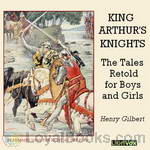 King Arthur's Knights: The Tales Retold for Boys & Girls
King Arthur's Knights: The Tales Retold for Boys & Girls
This book is an attempt to tell some of the stories of King Arthur and his Knights in a way which will be interesting to every boy and girl who loves adventures. (Introduction by Henry Gilbert) | |
By: Charles W. Diffin (1884-1966) | |
|---|---|
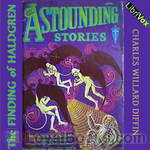 The Finding of Haldgren
The Finding of Haldgren
Chet Ballard answers the pinpoint of light that from the craggy desolation of the moon stabs out man's old call for help. | |
By: Sir Francis Galton (1822-1911) | |
|---|---|
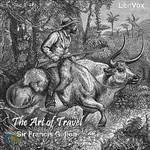 The Art of Travel
The Art of Travel
The Art of Travel is a handbook of practical advice for the adventure seeking Victorian. We hear how to organize all steps of a voyage, from the very beginnings (qualifications of a traveller, how to organize an expedition, the perfect outfit), to the actual trip (how to choose a bivouac, huts and tents, what game to shoot - and how, dealing with (hostile) savages), until the final, hopefully successful, return of the traveller (arranging memoranda). | |
By: H. De Vere Stacpoole (1863-1951) | |
|---|---|
 Beach of Dreams
Beach of Dreams
Two sailors, Harbutt and Raft, discuss their plight as workers under the thumb of a wealthy owner. During a windstorm, Raft and his fellow hands must climb a mast of the three-master to control a rigging gone astray. Once they master that runaway rigging, they pause to watch another vessel in the distance. It's a ship many have seen before. We are introduced to the occupants of this new ship, the Gaston de Paris. The owner is Prince Selm, who loves the finest things in life, yet is drawn to the sea... | |
By: Frank V. Webster | |
|---|---|
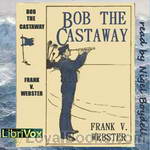 Bob the Castaway
Bob the Castaway
Frank V Webster was a pseudonym controlled by the Stratemeyer Syndicate, the first book packager of books aimed at children. This pseudonym was used on books for boys from the early 1900s through the 1930s.Bob the Castaway follows the antics of young prankster Bob Henderson, his parents futile attempts to get him to mend his ways, and his subsequent nautical adventures. (Introduction by Nigel Boydell) | |
By: George W. Ogden (1871-1966) | |
|---|---|
 Trail's End
Trail's End
When an agriculture professor wanders into a wicked Kansas cowtown in order to experiment raising wheat, both the professor and the town get more than they bargain for. A wild and wooly Western. | |
By: Philip Francis Nowlan (1888-1940) | |
|---|---|
 Armageddon- 2419 A.D.
Armageddon- 2419 A.D.
Elsewhere I have set down, for whatever interest they have in this, the 25th Century, my personal recollections of the 20th Century. Now it occurs to me that my memoirs of the 25th Century may have an equal interest 500 years from now—particularly in view of that unique perspective from which I have seen the 25th Century, entering it as I did, in one leap across a gap of 492 years. This statement requires elucidation. There are still many in the world who are not familiar with my unique experience... | |